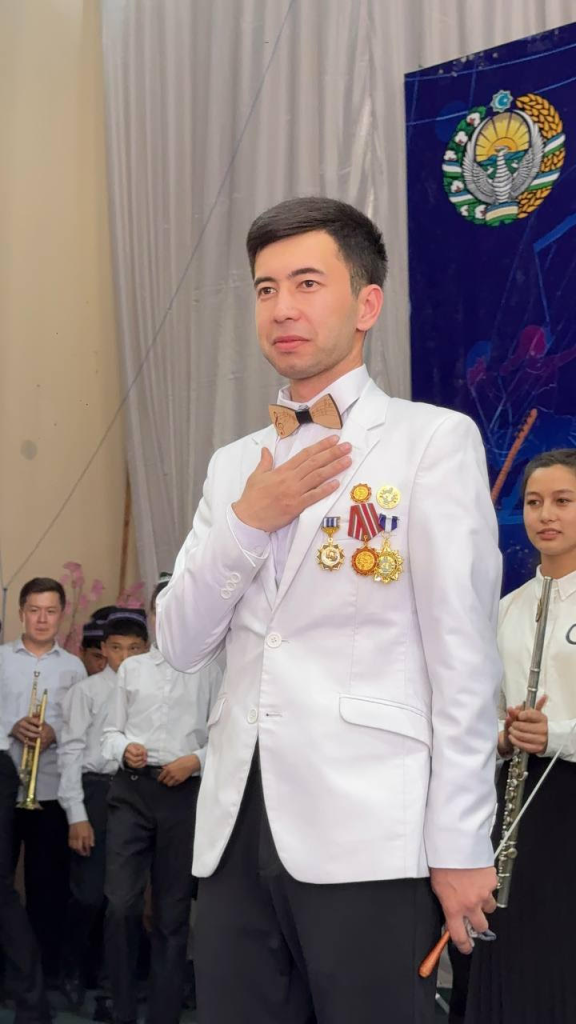
THE TEACHER’S SKILL IN SPARKING STUDENT INTEREST IN MUSIC THEORY AT CHILDREN’S MUSIC SCHOOLS
By Abdurayimov Fahriddin Muhammadali og‘li
Drum & Percussion Instructor, Children’s Music & Art School No. 6, Izboskan District
Abstract
This article explores the critical role of a teacher’s skill in fostering genuine interest in music theory among young students at music schools. Its aim is to share methods and approaches that make music theory engaging and effective. It outlines ways to boost motivation and curiosity through creative teaching methods and pedagogical techniques, with the goal of achieving success in music education.
Keywords: Music theory · Children’s music school · Teaching skill · Motivation · Teaching methods · Creative approach · Interactive instruction · Pedagogy · Music education · Student interest · Rhythm · Chords · Musical rules · Composition · Musical development
Introduction
Teaching music theory in children’s music and art schools is essential not only for developing musical skills but also for expanding thinking, nurturing creativity, and shaping aesthetic values. Music theory comprises the foundational principles of music—crucial for both composition and performance. However, it can often feel dry or challenging for students, especially when delivered in a purely academic style. That’s why teachers need specific strategies to make theory both interesting and effective.
A teacher’s skill—with creative approaches, pedagogical acumen, and musical knowledge—is vital to spark student interest in theoretical subjects. This not only helps students learn but also nurtures their love for music and the arts. An individual approach is crucial too—each child has unique learning needs and styles. Innovative techniques, interactive instruction, games, and creative exercises are necessary to engage students in theory lessons.
Core Content & Pedagogical Methods
1. Teacher’s Pedagogical Mastery
A teacher must adapt lessons to individual learners, make complex concepts simple through real-life examples, and act as a positive role model. Mastery in presentation style is essential for student engagement and understanding.
2. Motivation and Engagement
Teachers should identify and leverage students’ intrinsic motivations. Demonstrating music theory through familiar genres or famous composers can captivate students. Providing enjoyable tasks, recognizing progress, and encouraging mistakes-as-learning moments further fuel interest.
3. Innovative Teaching Methods
Employ interactive strategies: turn lessons into games, use music software, audio-visual aids, or online platforms. Learning rhythm through listening, analysis, games, and apps enhances engagement and concept retention.
4. Individualized Instruction
Personalize tasks based on student ability—challenge advanced learners and support others. Build strong rapport, adjust lessons to strengths and interests, and nurture each child’s musical potential.
5. Practical Exercises and Application
Incorporate hands-on practice: rhythm drills, melodic improvisation, composition tasks, and analysis of musical structures. Such activity-based learning solidifies theoretical knowledge through real experience.
6. Making Theory Clear and Fun
Explain chords, intervals, rhythms, and musical rules with interactive exercises or visual tools. Introduce students to various musical styles and cross-disciplinary connections.
Conclusion & Recommendations
A teacher’s pedagogic skill, creative thinking, and use of innovative methods are essential for making music theory engaging and effective. Capturing students’ attention, boosting motivation, tailoring lessons, and combining theory with practical tasks all support musical growth.
Recommendations:
- Use interactive and creative methods—games, simulations, music apps—to enhance engagement.
- Tailor lessons to each student’s learning style and interests.
- Encourage and reward student effort to build motivation.
- Blend theoretical content with practical activity and composition.
- Broaden students’ musical perspective by introducing varied genres.
- Manage lesson time wisely for focus and comprehension.
- Stay current—attend seminars, workshops, and continue professional development.
- Promote collaborative learning—group projects, peer interaction, and team-based music creation.
Implementing these approaches will boost teaching quality and foster deeper student involvement in music theory, nurturing their musical development.
References
- U.K. Mirzayeva. Theory and Methods of Music Education. Tashkent, 2018.
- A.T. Khoshimov. Pedagogical Technologies and Innovations. Tashkent, 2017.
- J.S. Tarkhanov. Innovative Methods in Teaching Music Theory. Tashkent, 2020.
- www.musictheory.net – Interactive resources on music theory.
- www.teachmusic.online – Innovative methods in music education.
Abdurayimov Faxriddin Muxammadali ogli was born on October 15, 2002, in Izboskan district, Andijan region, Uzbekistan.

Pingback: Synchronized Chaos Mid-August Issue: Layers Upon Layers | SYNCHRONIZED CHAOS